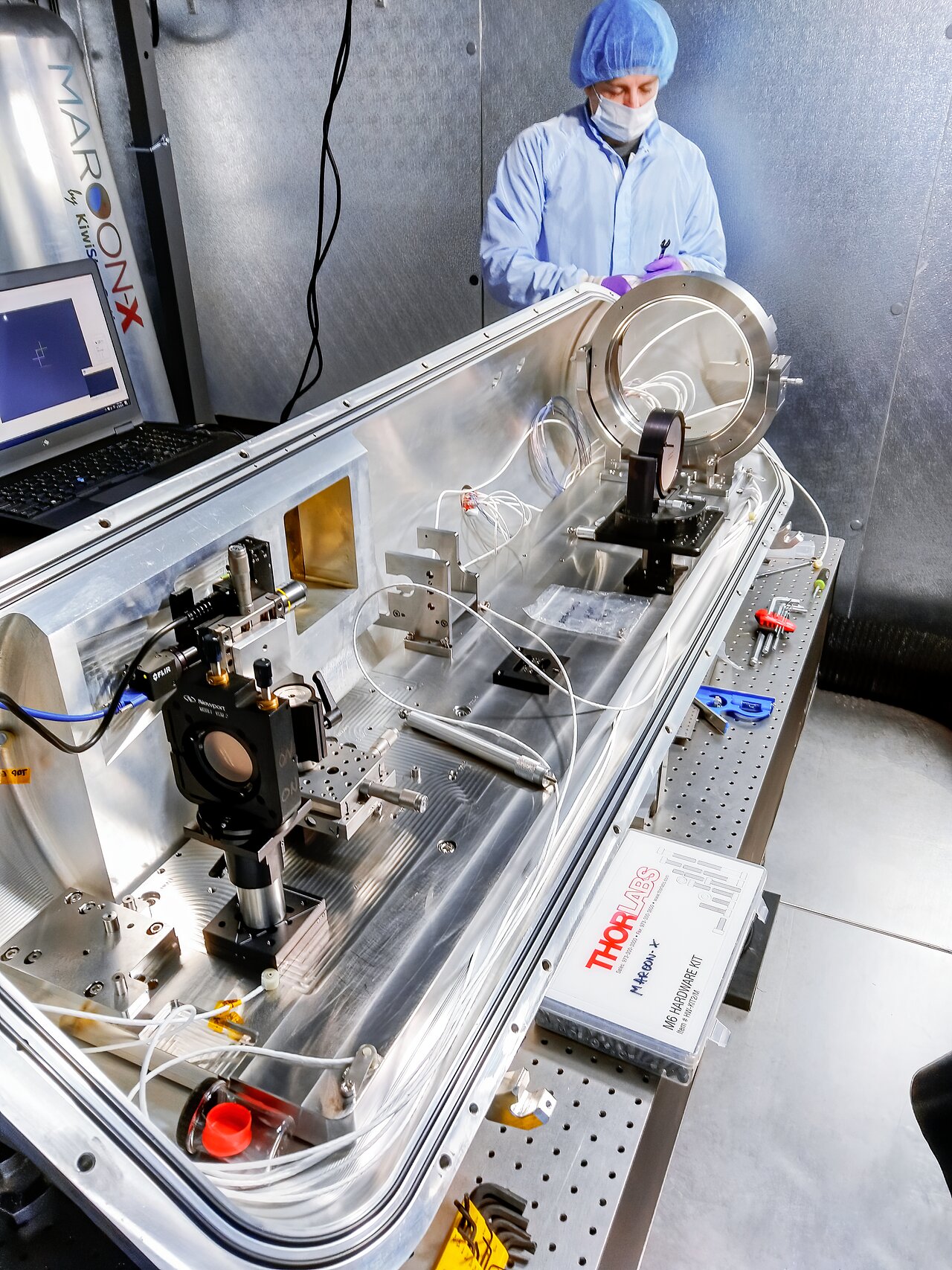M-dwarf Advanced Radial velocity Observer Of Neighboring eXoplanets (MAROON-X)
MAROON-X being assembled by Luke Gers at Gemini North in 2019
The M-dwarf Advanced Radial velocity Observer Of Neighboring eXoplanets (MAROON-X) is a highly stable fiber-fed and high-efficiency echelle spectrograph that detects light in the range 500–920 nanometers simultaneously in two camera arms. It was designed to detect Earth-size exoplanets in the habitable zones of cooler M dwarf stars and to confirm and measure the masses of low-mass planet candidates using the radial velocity method. MAROON-X was constructed at the University of Chicago, and installed at the Gemini North telescope in the first quarter of 2019.
The instrument has no moving parts, has high spectral resolution and can simultaneously record the spectra of the star, the sky background, and the light from a calibration source. It uses Gemini’s peripheral wavefront sensor 2 (PWFS2), along with a combination of octagonal and rectangular fibers.
Read More about MAROON-X.
Colorized 2D spectra of the star Gliese 486 as seen with MAROON-X
Science Highlights of MAROON-X
- Gemini North Detects Multiple Rock-Forming Elements in the Atmosphere of a Scorching Exoplanet
- MAROON-X Embarks on its Exoplanet Quest
Quick Facts
|
|
M-dwarf Advanced Radial velocity Observer Of Neighboring eXoplanets (MAROON-X) For scientists: Please find the most up-to-date details about the instrument offerings on the Gemini website. |
|
|
Site |
Maunakea |
|
Telescope |
Gemini North |
|
Type |
Spectrograph |
|
Wavelength range |
500–920 nm |
|
Number of detectors |
2 |
|
Detector format |
4080 x 4080 pixels |
|
Detector total size |
61,200 x 61,200 μm |
|
Spectral resolution: |
82,000 – 88,000 |
|
Date of first light |
2020 |
|
Science Goals |
Detect Earth-size planets in the habitable zones of mid- to late-M dwarfs |
|
Images taken with the instruments |
|
|
Images of the instrument |
|
|
Videos of the Instrument |
|
|
Press releases with the instrument |
|

